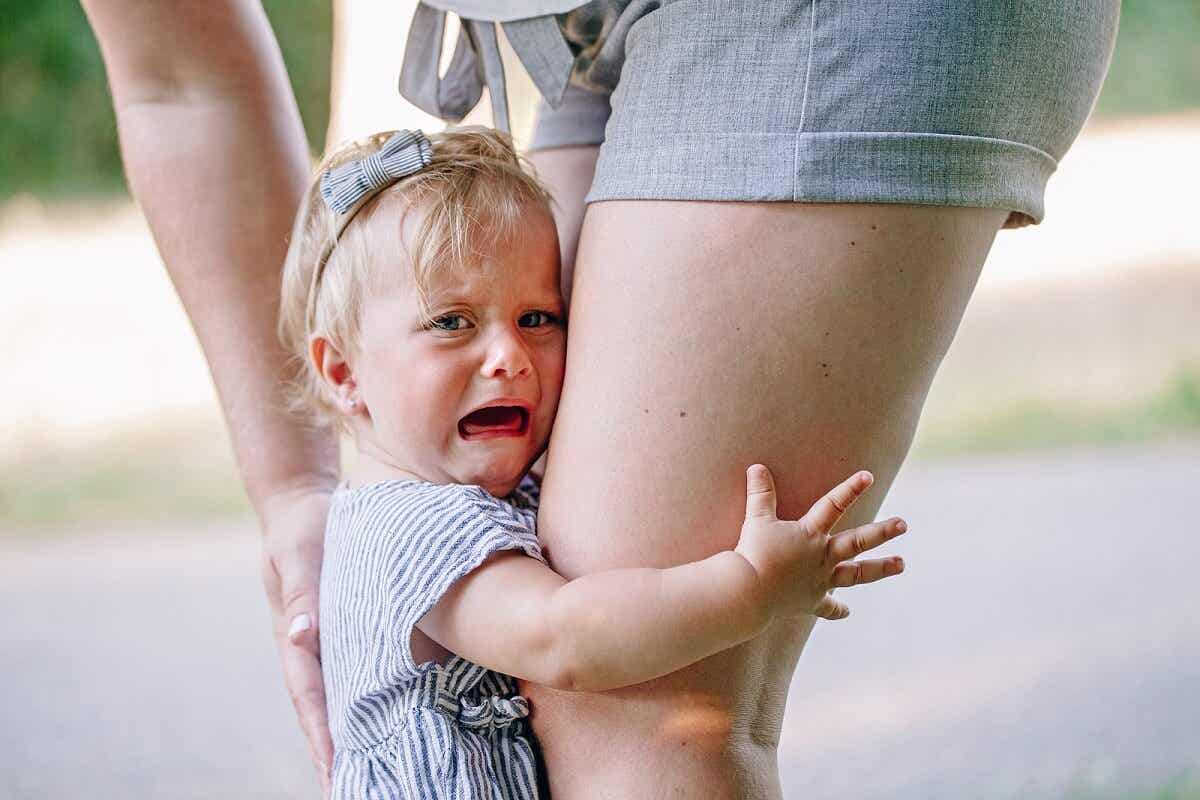Ambivalent Attachment: What is It and What are Its Consequences?


Written and verified by the psychologist Maria Fatima Seppi Vinuales
Have you ever heard of ambivalent attachment?
First of all, it’s worth remembering that attachment is the affective and emotional bond that is established between an infant and its caregiver, or between one person and another. It’s characterized by the search for proximity, support, and intimate interaction. It tends to develop from an early age.
Based on research (Bowlby, Ainsworth, Main, as main referents), it was established that attachment has an impact on the idea that the person has about themselves. It also affects the idea of the attachment figure and about the relationship itself. These are the so-called “active internal models,” which then tend to be transferred to other relationships.
When the attachment relationship is well-established, feelings of trust and security developments. Then, a person learns about empathy, communication, and self-esteem.
However, this doesn’t always go in that direction and may have weak foundations. As a result, relationships become unstable or conflictual.
Let’s see what ambivalent attachment is.
Ambivalent attachment theory
Based on the research carried out in the “strange situation” by Ainsworth, researchers detected different types of attachment. Among them, we find secure, insecure-avoidant, and insecure ambivalent. In addition, later research by Main and Solomon identified a fourth type, which is disorganized attachment.
Regarding secure attachment, it occurs in situations where children seek contact with their caregiver figure, can express their discomfort and distress, and at the same time can resume their exploratory activity.
Ambivalent attachment refers to cases in which the behavior is ambiguous. There’s interest in resuming contact, while at the same time, the person avoids it when it appears. There’s a tension between proximity and resistance.
In the case of the avoidant attachment pattern, the child seems not to feel distressed and rejects the caregiver figure when they appear.
Examples of ambivalent attachment
Some behaviors in which we can detect ambivalent attachment are situations where the child feels insecure in the absence of their caregiver, but when the caregiver returns, they approach as well as rejects them.
In adult cases, it’s reflected in relationships in which there’s “back and forth” or interest but also rejection. Similarly, there’s a demand for contact, attention, and proximity, which when one of the members doesn’t have it, seeks to make the other feel guilty.

Also read: What Does it Mean to Be a “Crystal Child”?
Causes of ambivalent attachment
To understand the causes of this form of attachment, we must think beyond the individual and relational levels. This is because contextual elements also contribute.
For example, specialists say the basis of ambivalent attachment has to do with the inconsistency or unavailability of the caregiver’s response to the child’s demands.
When the explanation only focuses on this aspect, it seems to be responsible and blaming. However, it’s also necessary to analyze the conditions and impediments to establishing healthy bonds. We mustn’t lose sight of the influence of the different systems and the context.
What are the characteristics of ambivalent attachment?
In ambivalent attachment, the typical behavior is that children are anxious and insecure in the presence of strangers. In fact, they may even cry. However, when the parents return, they don’t find comfort. The anguish continues and they have an oscillating behavior between approach, distancing, and rejection.
The child interprets the bond as intermittent and this generates insecurity. They understand that sometimes they receive attention and sometimes they don’t. The problem is the uncertainty of not knowing when. Inconsistency could be the word that summarizes this type of attachment.
What are the consequences of ambivalent attachment?
The main point of departure of attachment theory is that it defines the basis of what future relationships will be. Meanwhile, has an impact on a personal level, as well as on issues such as self-esteem and security.
Different authors emphasize that there’s a parallelism between the relational experiences of adults and attachment theory. Therefore, from this idea, specialists think that those who have an ambivalent style are adults who are insecure, distrustful, afraid of being abandoned, and who find it difficult to commit to relationships.
Some studies even mention the presence of hypervigilant behaviors. They also report the presence of anxiety, a strong need for closeness, and fear of rejection and separation. Garrido (2006) mentions that people with ambivalent attachment report high levels of negative affect, with discomfort and anger.
Discover: Anxiety in Children: When Should I Be Concerned?
Is there any treatment?
Given that attachment is related to the capacity of parents and caregivers to read the needs of children, research suggests actions linked to sensitivity, especially during early childhood.
On the other hand, specialists must work with adults with attachment difficulties (ambivalent, disorganized or avoidant). This is especially true in cases of mental health problems. Specialists recommend this for a second stage.
First, it’s a matter of intervening in specific issues, which are more sensitive to change. Then in deeper and more far-reaching problems, which require more time to address.
Likewise, when the situation is already present, specialists recommend psychological therapy. In these cases, they work a lot with individual aspects. Important aspects are self-esteem, security, confidence, emotional dependence and also on relational patterns.
Depending on the magnitude of the situation, it can be approached from the trauma theory, especially in the presence of violent situations.

Secure attachment is always a protective factor
It’s important to keep in mind that the quality of the bond is what influences the development of children. Like any bond, it’s the construction, the time, the successive approaches, and the contacts that favor the knowledge and the understanding of what the other needs.
Secure attachment will always be a protective factor for different life circumstances. However, we must also consider that this isn’t completely isolated.
Thus, it’s always necessary to ask oneself the conditions that influence the development or the sustaining of a certain type of attachment. In the answers, you may find that many times, economic and social conditions have a heavy influence.
As Bowlby said:
“Just as children depend on their parents for support, there are parents, especially mothers, who depend on the bulk of society for economic resources. If a community values its children, it must value its parents.”
Therefore, thinking about attachment also implies accompanying caregivers through resources such as parental education programs, reconciliation policies, family support, and employment, among other measures.
All cited sources were thoroughly reviewed by our team to ensure their quality, reliability, currency, and validity. The bibliography of this article was considered reliable and of academic or scientific accuracy.
- Bowlby J. Attachment. London, England: Hogarth Press; 1969. Attachment and loss; vol 1.
- Félix López (2006) Apego: estabilidad y cambio a lo largo del ciclo vital, Infancia y
Aprendizaje: Journal for the Study of Education and Development, 29:1, 9-23. Recuperado en http://dx.doi.org/10.1174/021037006775380830 - Garrido-Rojas, Luzmenia. (2006). Apego, emoción y regulación emocional: Implicaciones para la salud. Revista Latinoamericana de Psicología, 38(3), 493-507. Recuperado em 06 de abril de 2021, de http://pepsic.bvsalud.org/scielo.php?script=sci_arttext&pid=S0120-05342006000300004&lng=pt&tlng=es.
- Loubat O, Margarita, Ponce N, Patricia, & Salas M, Patricia. (2007). Estilo de Apego en Mujeres y su Relación con el Fenómeno del Maltrato Conyugal. Terapia psicológica, 25(2), 113-122. https://dx.doi.org/10.4067/S0718-48082007000200002
- Tremblay RE, Boivin M, Peters RDeV, eds. van IJzendoorn M, ed. tema. Enciclopedia sobre el Desarrollo de la Primera Infancia [en línea]. https://www.enciclopedia-infantes.com/sites/default/files/dossiers-complets/es/apego.pdf. Actualizado: Febrero 2010. Consultado: 06/04/2021.
This text is provided for informational purposes only and does not replace consultation with a professional. If in doubt, consult your specialist.








